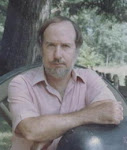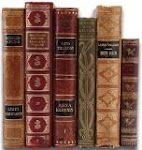Saturday, July 25, 2009
Plagiarism Is Ten Letter Word
In almost any writing group, someone will ask a question about plagiarism in an effort to clarify a somewhat confusing subject. Almost immediately, the answer will come back that plagiarism is the misappropriation of another person’s work. They will give the entry in the dictionary, along with those little symbols that warm the heart of a grammarian, but are difficult to type. The next round of questions and answers always involves copyright and trademark. This is the point where I want to head to the nearest bolt-hole and cover my ears. The person asking the original question only wants to know why some writers feel free to explore subjects other writers have written about, while others seem to be overly cautious and inhibited. So I am going to answer the question that never gets answered. It centers on what is original and what is open to artistic interpretation.
Titles are not copyrightable, but you already knew that. You may be wondering why people get sued when they fool around with their favorite character, who might be named Harry Potter. This is where trademark comes in. Harry Potter is more than a character in a copyrighted story. He, along with his friends, is an industry, and you can’t capture him and keep him for your own. The guys who create posters, music, and all of the other trade goods, are making money, and they don’t want you standing in front of the machines while they stamp out the dollar bills. But enough of this. Let’s talk about something interesting.
Not too long ago, I witnessed a terrible sling-fest between two writers who were accusing each other of stealing material from the other’s blog. Somewhere in the pauses between the shin kicking and the hair pulling, one of them uttered that terrible word— lawsuit. I was not surprised at the way this catfight turned out. Someone found the ‘original’ article on a third-party website, and gave the address where it could be read in its entirety. I have a feeling the whole problem was the fault of their muses, who just happened to be on the same wavelength.
One of the things—and probably the most important detail about creative fiction—is what we call plot. Plots are not copyrightable. Yes, you read that correctly. You cannot copyright a plot. Each and every one of them date back to the days when people lived in caves. The most stirring moment in their society was when the traveling storyteller arrived at irregular intervals. Milton Berle, the popular humorist from the early days of television, said there were only twenty-three jokes, and all of them were used over and over during the days of Vaudeville. He would challenge the members of his audience to tell him what they thought was an original joke. He would then give them the original from the Vaudeville circuit, plus the identity of the person who used it in their act. Fiction writers are luckier in this respect. Someone once listed the various types of plots found in fiction, and they could only come up with thirty-six. There is Escape, Challenging Obstacles, Barriers to Love, Revolt, Hatred of a Friend or Family Member—to name a few. If you think it is more complicated, then sit down with an armload of best selling novels and carefully analyze the stories. You can’t find a better exercise for preparing your own story for submission. What is your story really about? Despite the many sub-plots, a story can be condensed to one sentence, and you need this for the back of the book. Find a comfortable chair and kick back for an hour or two. I will leave it to you to dig out the plot.
Saturday, July 18, 2009
You Can't Judge a Book by its Cover?

We live in a world where we are constantly bombarded by a wide variety of elements that stimulate all five of our senses. Advertisements reach out to us from the pages of magazines, television, and from the Internet. We are constantly surrounded by music, sound bytes from television, and the voices of our friends. What would a day be like if we could not smell the rich aromas from a bakery, the smell of salty air from the ocean, or the subtle aroma of perfume. Each of these elements has a tremendous impact on our senses. I can still remember the smell of the salty air as I read Captain Ahab for the first time. Used correctly, we can stimulate each of our reader’s senses in a manner that will make their reading experience more vivid and imaginative.
Vivid and imaginative are two words that fit together in ways that are beyond our ability to explain. The best book in the world, however, will not sell if we don’t make every effort to give it visual appeal. Don’t let someone mislead you with the old saw: ‘you can’t judge a book by its cover.’ First impressions are important, and most of it comes from what appears on the covers of our book.
Marketing experts tell us that we are likely to be attracted to a particular book because of the colors, as well as the artwork. Red and black are two of the most vivid and appealing colors, but it is a good idea to do your own research. Go to a bookstore and slowly approach the section where your book will be displayed. What do you notice? While a red and black cover might stand out when displayed on a table by itself, this might not be true if you place it among hundreds of other books with a variety of visual elements. Think in terms of a flower arrangement where a vast array of colors and textures are displayed side by side. What are the little things that will make someone select your book from the shelf instead of another? Take some time to carefully consider each element before you give your input to the graphics designer, and take a second look at the books that appeal to you. There is definitely something magical that goes beyond the elements of color, text, or graphics.
Wednesday, July 15, 2009
GET A CLUE

Most writing books tell us that the writer must answer all of the questions before the end of the novel, otherwise we are 'cheating' the reader who has worked so hard in following the clues. I totally disagree with this. Some of the best mysteries do not answer every question the reader might have. An example is Lee Child's Jack Reacher series. We know very little about Reacher and this is a lot of the appeal of this particular character. There are many mystery books where all of the events aren't explained. A devil unseen might be a lot more frightening than one we come to know too well by the last chapter, only to discover he, she, or it is a large bear, a grasshopper, or an old lady with a sharp-pointed umbrella. As for peculiarities a character might have, I think Aunt Edna is a lot more appealing if we don't know why she hates young children, screams at cops, but stops and hugs every small animal she passes. I think fiction is best if it imitates real life. You can know someone for forty years and continually get surprised. Why should fiction be any different?
Subscribe to:
Posts (Atom)























